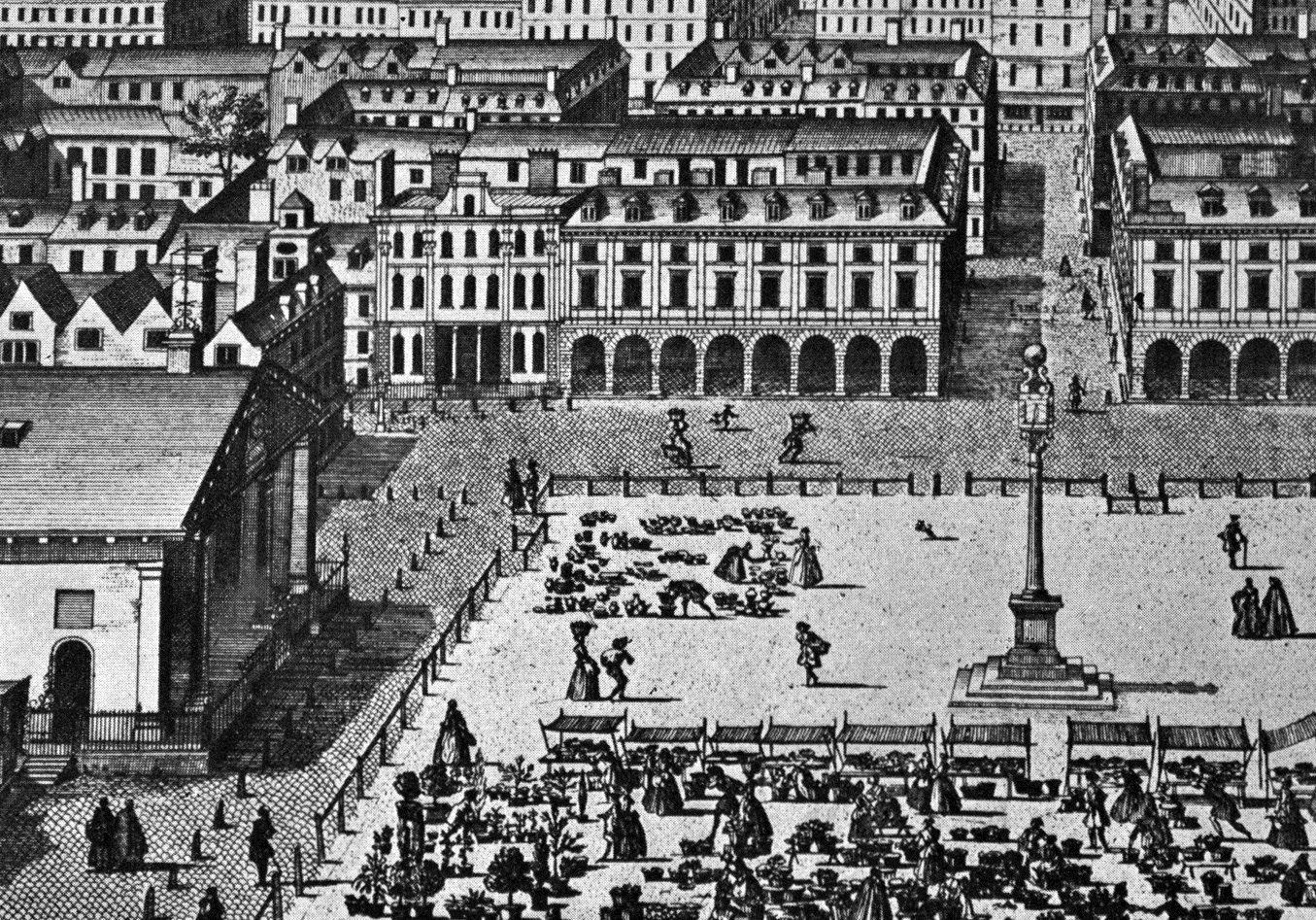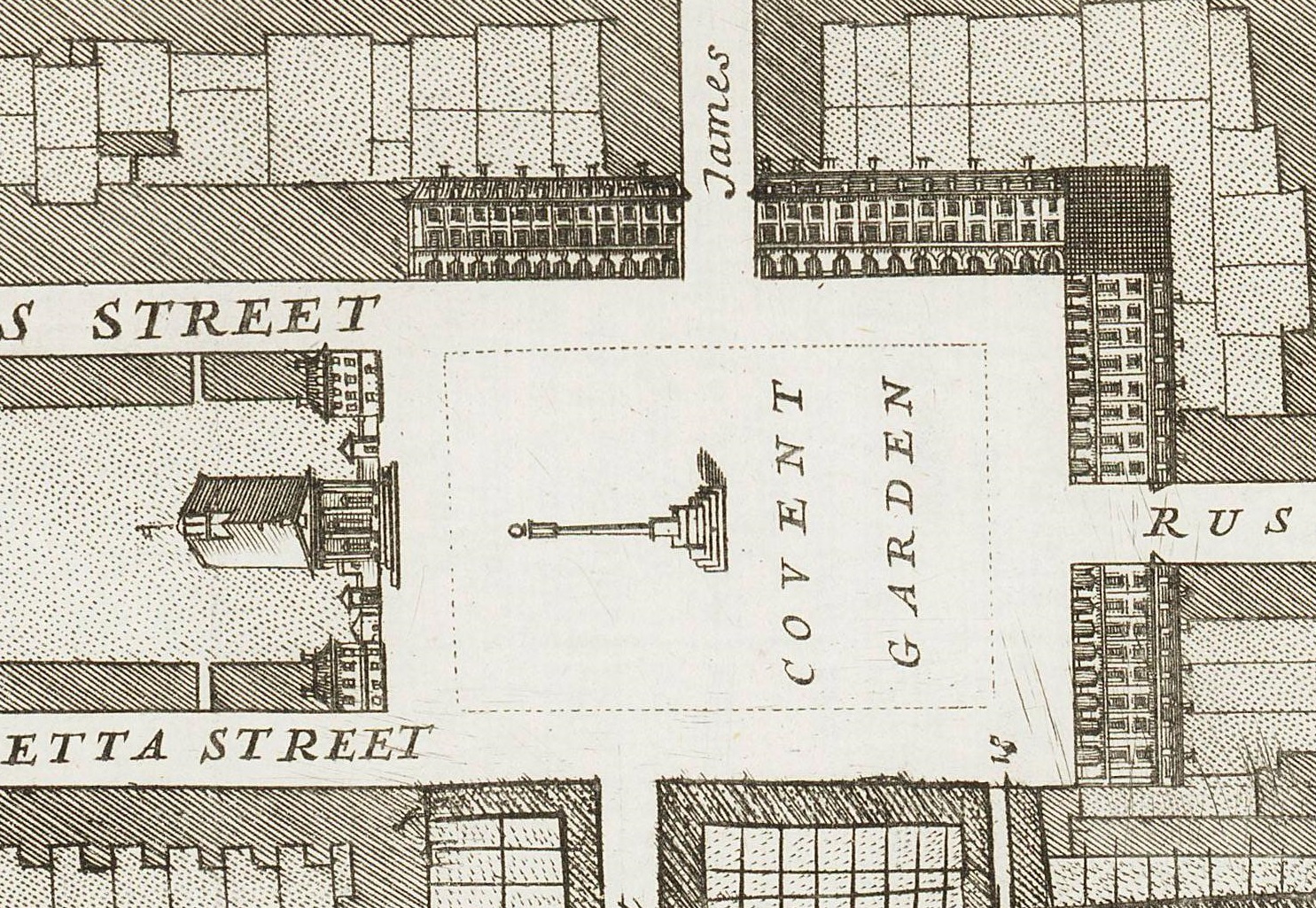The Great Piazza, Covent Garden, London, was laid out starting in 1630.
The block of Nos. 1, 2 and 3 Great Piazza was demolished in 1877 and replaced with a rather good replica called Bedford Chambers.


Covent Garden.
View by Wenceslaus Hollar c.1658.
Shows Orby's house on N side of Piazza.
From BM.

The Piazza in
Covent Garden.
Engraved by Wenceslaus Hollar
(died 1677).
Looking at
St.Paul's church
on W side.
Sir Thomas Orby, 1st Baronet, lived in the arcaded building on the far RHS here (the N side).
Though his section of the building is just off the picture.
See full size.
From here.

View of Covent Garden looking N, dated c.1720.
Engraving pub 1731.
Sir Thomas Orby, 1st Baronet, lived in the arcaded building in the centre-left (to the left of James St).
See full size.
From here.

Detail of above.
Sir Thomas Orby, 1st Baronet, lived in the 8 bay arcaded building here.
His house was the last 3 bays on the RHS.

Covent Garden c.1720.
Sir Thomas Orby, 1st Baronet, lived in the arcaded building in the centre-left here.
See full size.
From here.

View of Covent Garden dated 1737.
Sir Thomas Orby, 1st Baronet, lived in the arcaded building on the far RHS here.
See full size.
From the Tate.

Detail of above.
Sir Thomas Orby, 1st Baronet, lived in the 8 bay arcaded building here.
His house was the last 3 bays on the RHS.

View of Covent Garden.
Print made by Cluer Dicey
("C. Dicey and Co."), c.1750.
Church on LHS.
The house of Sir Thomas Orby is straight ahead here, in
the arcaded building in the centre-left.
From British Museum.

A View of Covent Garden.
By Samuel Scott.
Late 1750s.
For sale at Philip Mould and Company.
Shows the Orby house on the corner on the RHS.

No. 3 Great Piazza, Covent Garden, is clearly marked on
map of 1792-99.
The new building,
Bedford Chambers,
was built on the site in 1877-79.
Bedford Chambers is very similar to the old design (still arcade, still 8 bays)
but on a bigger scale.
The occupant of
Bedford Chambers is now
Apple Store, Covent Garden
(the biggest Apple store in the world).

Street view
of Bedford Chambers.
Corner of N side of the Piazza
with James St.
Drag to rotate.

Bedford Chambers.
Photo 2022.
See larger
and full size.
See close-up of corner.
Please donate to support this site.
I have spent a great deal of time and money on this research.
Research involves travel and many expenses.
Some research "things to do"
are not done for years, because I do not have the money to do them.
Please Donate Here
to support the ongoing research and
to keep this website free.